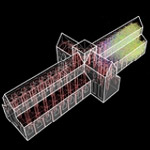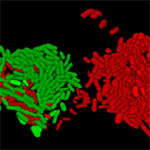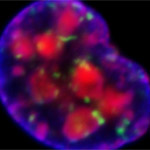York Science and Innovation Grand Tour
University of York departments and centres are taking part in the Grand Tour, a visual celebration of York’s phenomenal achievements in science and innovation. They include:
Dr David Jenkins, Department of Physics
 |
Nuclear physicists at the University of York recreate the spectacular conditions of exploding stars like supernovae to explore the origins of heavy elements. Our world is made up of heavy metals and other elements that were at some time produced in exploding stars like supernovae. By synthesising these nuclear reactions, York physicists, working in laboratories across the globe, hope to answer some of the fundamental questions about heavy elements and how they are created. (Image: Roy Kaltschmidt, Lawrence Berkeley National Lab) |
Dr Damian Murphy, Department of Electronics
 |
University of York AudioLab researchers are using the latest 3-D audio modelling technology to recreate the sound of 16th century choral voices in the Abbey ruins. Before its closure by Henry VIII in 1539, St Mary’s Abbey Church rivaled York Minster in both size and spectacle. What was it like 500 years ago to walk its darkened aisles and hear soaring voices echo through the gothic vaults? Researchers in the AudioLab are bringing the sounds of the past to life using technology architects employ to design buildings of the future. (Images: Stephen Oxnard and Aglaia Foteinou) |
Centre for Immunology and Infection and Dr Peter O'Toole, Department of Biology
 |
York scientists are developing novel ways to fight bacterial disease and to exploit these microscopic organisms to improve our environment. Some bacteria cause disease but others can be used to our benefit. The image shows the intestinal bacteria Escherichia coli each just 1/1000th of a millimetre long and expressing either red or green fluorescent protein. In the Department of Biology researchers are looking at novel ways to combat disease-causing bacteria, but also to exploit bacteria for our benefit, such as cleaning contaminated soli and generating energy from plant waste. (Image: Andrew King, Marjan van der Woude and the Imaging and Cytometry Laboratory) |
YCR Cancer Research Unit
|
|
York scientists were the first to isolate prostate cancer stem cells allowing them explore why they are more resistant to treatment than other cancer cells. Scientists in the YCR Cancer Research Unit at the University of York are using the latest technologies to identify survival mechanisms in prostate cancer stem cells. This could lead to new therapies to combat a disease which kills more than 10,000 men in the UK every year. |
Further information

